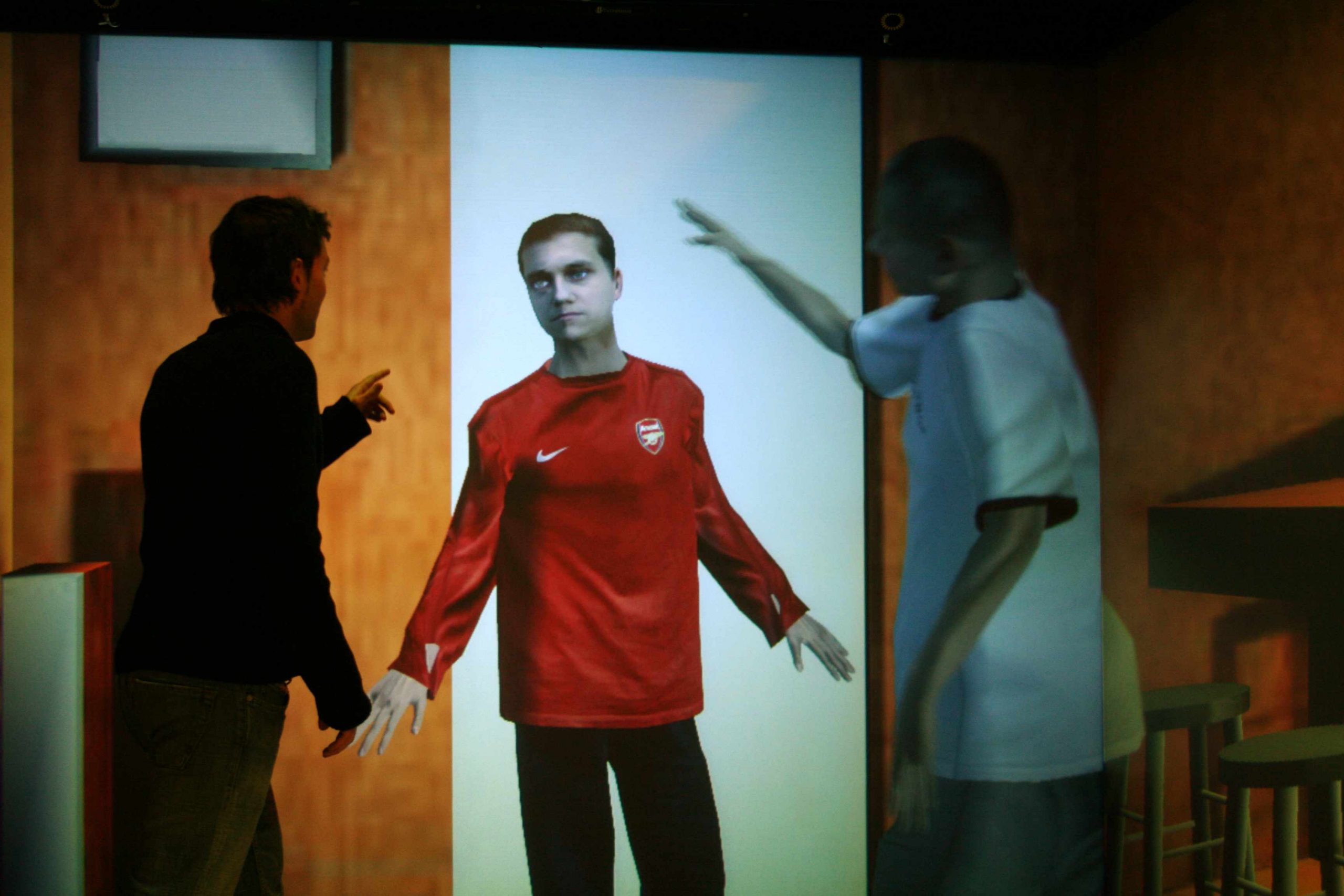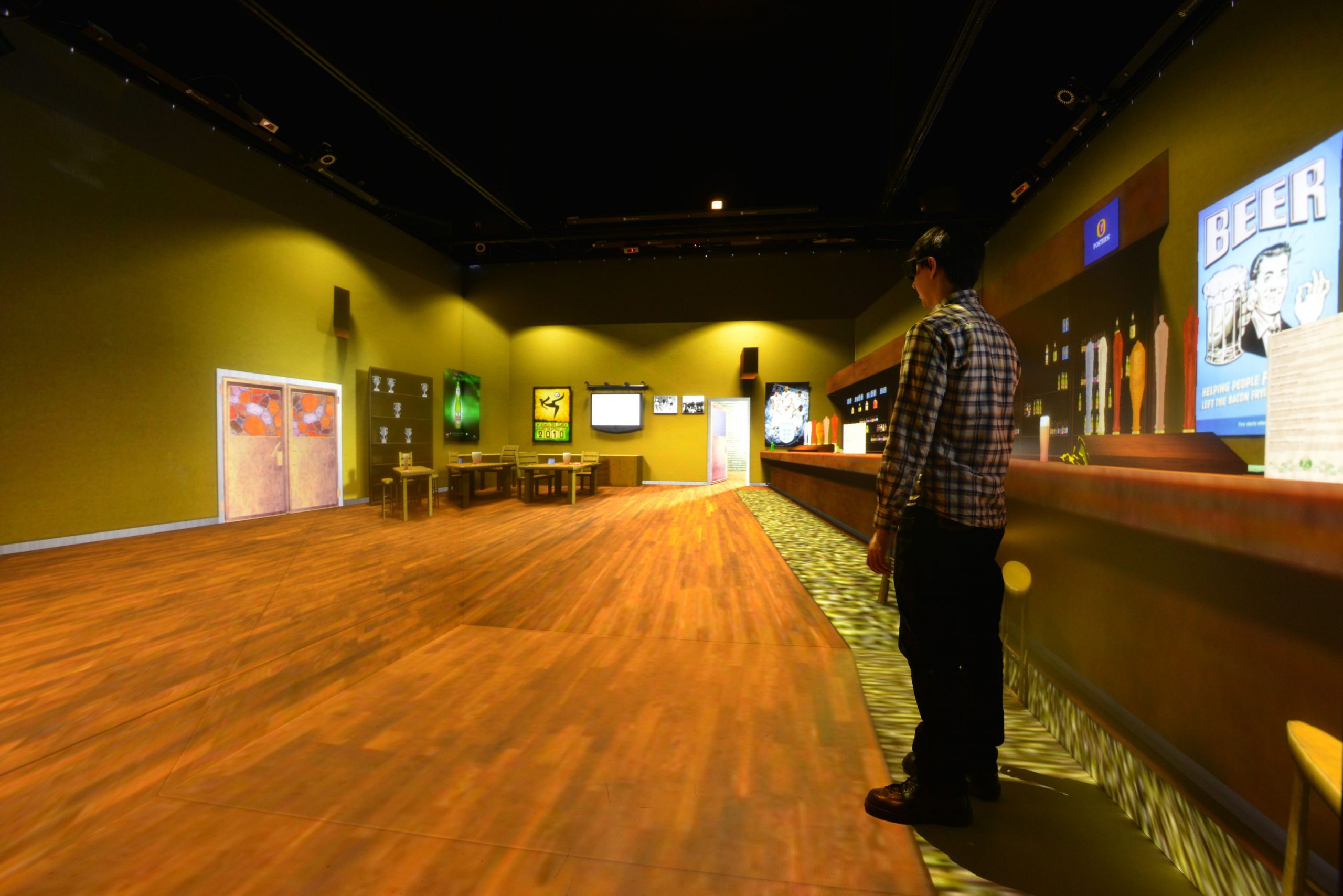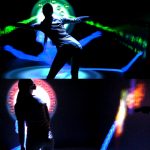Violent Emergencies
Mel Slater, David Swapp, Aitor Rovira, Mark Levine, Claire Campbell, Jian J. Zhang, Richard Southern
Introduction
The aim of this project is to improve the quality of immersive social virtual environments. By ‘quality’ we refer to the response of participants to virtual social situations, in particular the extent to which they respond realistically to what they perceive. By ‘response’ we mean at every measurable level, ranging from non-conscious physiological processes through to overt behavioral, emotional and cognitive responses – including what they report in interviews about their subjective state of mind [1]. We aim to identify the most important aspects to create a plausible virtual environment. We want to focus on the quality of the virtual characters textures, animations, realistic illumination and the environment where the situation takes place.
One of our goals is to exploit our research in socially useful applications, and thereby also contribute to the growing body of research that uses VEs as a laboratory for social psychological research. We want to revisit well-studied mechanisms in the social psychology literature, and observe whether we can achieve the same degree of interventions using IVEs. We focus on the bystander effect [2] moderated by in-group and out-group identification [3].
Problems
One of the major problems that social psychologists face when studying the problem of street violence is the lack of information about what actually happened. CCTV footage does not provide much information, due to a poor image quality, a narrow field of view and no sound recording. Witness accounts are not very reliable either, their opinion is usually not very rational and even contradictory depending on who do you ask about the situation. Specially if they are asked some days later, memories are distorted and nobody remembers what exactly happened. There are also difficulties to recreate such situations in an experimental setting using real actors, both for ethical and practical reasons.
Solutions
To overcome these obstacles, we utilise an immersive virtual environment (IVE), inhabited by virtual characters to enable the simulation of violent situations and therefore the ability to study the behaviour of experiment participants [4]. We want to take advantage of the results in previous studies [5, 6] that showed that people tend to respond realistically to situations and events that occur in an IVE [7].
Acknowledgments
This research was sponsored by the Engineering and Physical Sciences Research Council (EPSRC).
Papers
@article{rovira2009use,
title={The use of virtual reality in the study of people's responses to violent incidents},
author={Rovira, Aitor and Swapp, David and Spanlang, Bernhard and Slater, Mel},
journal={Frontiers in behavioral neuroscience},
volume={3},
pages={59},
year={2009},
publisher={Frontiers}
} @article{slater2013bystander,
title={Bystander responses to a violent incident in an immersive virtual environment},
author={Slater, Mel and Rovira, Aitor and Southern, Richard and Swapp, David and Zhang, Jian J and Campbell, Claire and Levine, Mark},
journal={PloS one},
volume={8},
pages={e52766},
year={2013},
publisher={Public Library of Science}
} 



